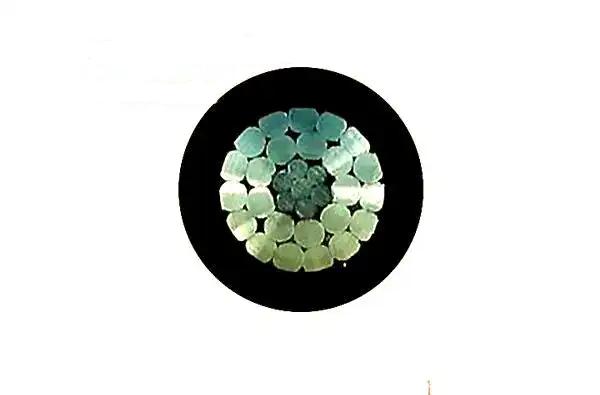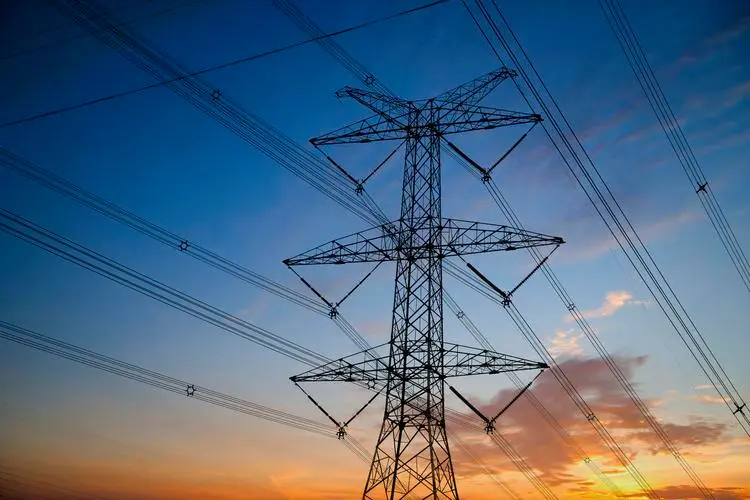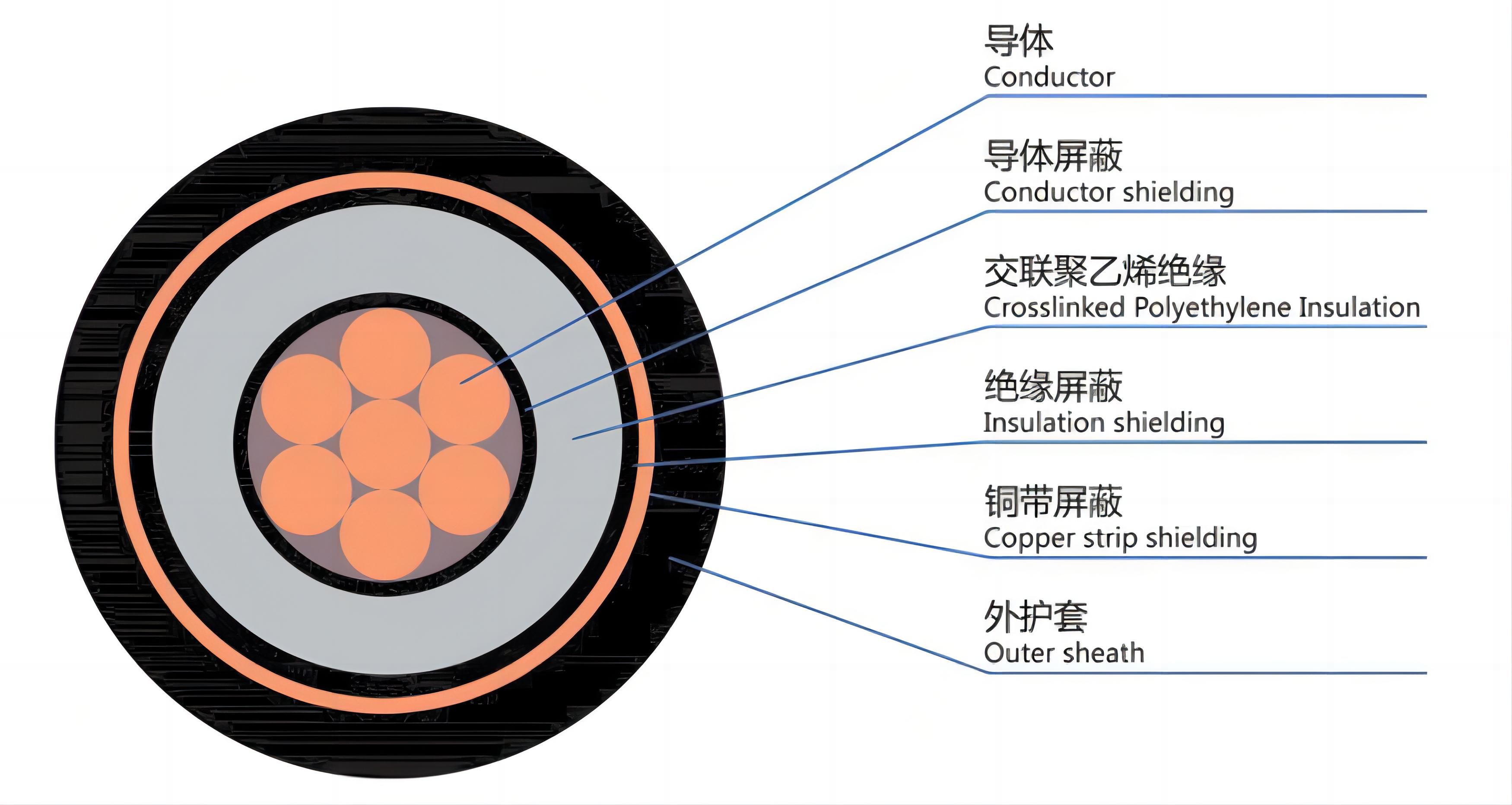01
Introduction to wire products
◆Product Specifications and Material Features
The manufacturer provides aluminum core steel core aluminum stranded wire core overhead insulated conductors that meet international standards, with specifications ranging from 10 square to 400 square. These conductors are designed for overhead cables (medium and low voltage overhead power transmission lines) and use high-purity aluminum cores and anti-aging polyethylene insulation sheaths to ensure excellent electrical performance and durability. In addition, its cross-linked polyethylene sheath material makes the outer layer of the conductor have excellent heat resistance, pressure resistance, corrosion resistance and stress cracking resistance.
Using 99.99% high-purity aluminum wire, it has lower loss and less heat generation, ensuring long-term stable performance.

◆Performance characteristics and applications
The low eccentricity design ensures uniformity of the cable, prevents breakdown, and ensures safe use. This product is designed for overhead power line distribution systems. Although it is easily affected by the outside world, it is easy to install and has low cost, so it is still widely used in remote areas or places where underground cable laying is difficult.
02
Overhead line estimation method
◆Single-strand wire diameter estimation
To quickly calculate the single-strand wire diameter of a stranded wire, you first need to know the number of strands and the cross-sectional area of the stranded wire. Divide the number of strands by the cross-sectional area, multiply the quotient by 5, then square it, and finally take half of the square root to get the single-strand wire diameter in millimeters.
◆ Limit span estimation
To quickly calculate the normal limit span of an aluminum stranded wire overhead line, you can use the following formula to calculate: First, multiply the cross-sectional area of the aluminum stranded wire by 5, then take half of the result to get the limit span. For steel-core aluminum stranded wire, the limit span does not exceed four times the wire cross section.
◆ High-voltage line transmission capacity
For a high-voltage 61035kV overhead line, its transmission capacity can be quickly calculated using the following formula: First, divide 61035kV by 10 to get 6.1035kV, then multiply by 5 to get the transmission limit kilovolt-ampere. In addition, according to the relationship between line capacity and transmission distance, the capacity that can be transmitted per kilometer of line is about 580-300 kVA, while the transmission distance is usually 1-2.5 kilometers. At the same time, the load distance (i.e. the load carried by a unit length of line) is about the megavolt-ampere level, and the load distance per kilometer of line is usually between 55-150 megavolt-amperes. Through these formulas and parameters, the transmission capacity of the high-voltage 61035kV overhead line can be quickly estimated.

◆ Transmission capacity of low-voltage lines
For low-voltage 380/220V overhead lines, their transmission capacity and suitable distance have certain characteristics. Since low-voltage power transmission is usually not suitable for long distances, it is generally recommended not to exceed one kilometer. At the same time, according to the concept of load distance, the load that can be carried per kilometer of line is related to the voltage level and the number of phases. For three-phase lines, the load distance per kilometer is about kilowatts, while for single-phase lines, this value is six kilowatts.
◆ Conductor cross-sectional area calculation
When selecting overhead aluminum wire, we need to consider its moment coefficient to calculate the appropriate conductor cross-sectional area. For three-phase lines, the moment coefficient is multiplied by 4; for single-phase lines, it needs to be multiplied by 24. In addition, if copper wire is selected for power transmission, its conductor cross-sectional area needs to be converted to 6 times the cross-sectional area of aluminum wire. Through these simple calculations, we can quickly determine the appropriate conductor cross-sectional area.
◆ Neutral cross-sectional area selection
In three-phase four-wire power supply lines, the determination of the neutral cross-sectional area follows certain rules. When the cross-sectional area of the phase aluminum wire is less than 70mm², the conductor cross-sectional area of the neutral wire should be the same as that of the phase wire; and when the cross-sectional area of the phase aluminum wire is greater than or equal to 70mm², the neutral wire can be selected as half of the cross-sectional area of the phase wire.
◆ Motor power supply line
For 380V three-phase motor power supply overhead lines, we can use an empirical formula to quickly estimate the conductor cross-sectional area. This formula is: 100 kilowatts per 100 meters of copper divided by five, and 100 kilowatts per 100 meters of aluminum divided by three. According to this formula, we can quickly select the appropriate conductor cross-sectional area according to the power of the motor and the length of the line to ensure the stable power supply of the motor.
◆ Voltage loss estimation
For 10kV overhead aluminum wire, the voltage loss percentage can be quickly estimated by the following formula: multiply the product of phase flow, transmission distance and conductor cross-sectional area by 0.6, and then divide it by the conductor cross-sectional area. This formula can help us quickly predict and evaluate the voltage loss of the line.
◆ Active power loss
For 10kV overhead lines, the active power loss can be quickly calculated by the following formula: multiply the square of the current by the transmission distance, and then divide it by ten times the conductor cross-sectional area. This formula provides us with a convenient method to predict and evaluate the active power loss of the line.
◆ Specific method of voltage loss
For low-voltage 380/220V overhead lines, the voltage loss can be quickly estimated by the following method: First, for aluminum wire, the voltage loss calculation formula is “load moment divided by thousand cross-sectional area, three-phase multiplied by 13, single-phase multiplied by 26”. If the power factor is 0.8, you need to add 0.2 to the calculated result.

◆ Resistance and current values
The resistivity of aluminum wire is 32, while that of copper wire is 19. For aluminum wire, its safe current carrying capacity can be calculated by the method of “cross-section multiple product is ampere”, specifically, 16 multiplied by 6.5 times the cross-section, plus some correction factors.
◆ Load current estimation
For low-voltage overhead aluminum stranded wire, its load current can be estimated by a simple quick calculation formula: “Twenty-five lines are based on 100 amperes, and the calculation is increased by 50 at each level”. This formula can help engineers quickly and accurately estimate the load current of overhead lines.
◆ Ground capacitance
In low-voltage overhead lines, the ground capacitance of the line is an important parameter. In order to quickly estimate this parameter, we can use a simple method: according to whether the line has a lightning arrester, select the corresponding coefficient for calculation. For overhead bare wires without lightning arresters, the ground capacitance of the line can be estimated by dividing the kilometers by 220; if there is a lightning arrester, the coefficient is 160.
03
Company Introduction and Vision
Henan Shuobang Cable Co., Ltd., a leader in China’s wires and cables, focuses on the research and development and production of wires and cables. Adhering to the corporate goal of “creating a brand and enjoying global reputation for quality”, the company has gathered a professional technical team and is committed to providing customers with high-quality products and services. We look forward to your visit and work with us to create a better future.